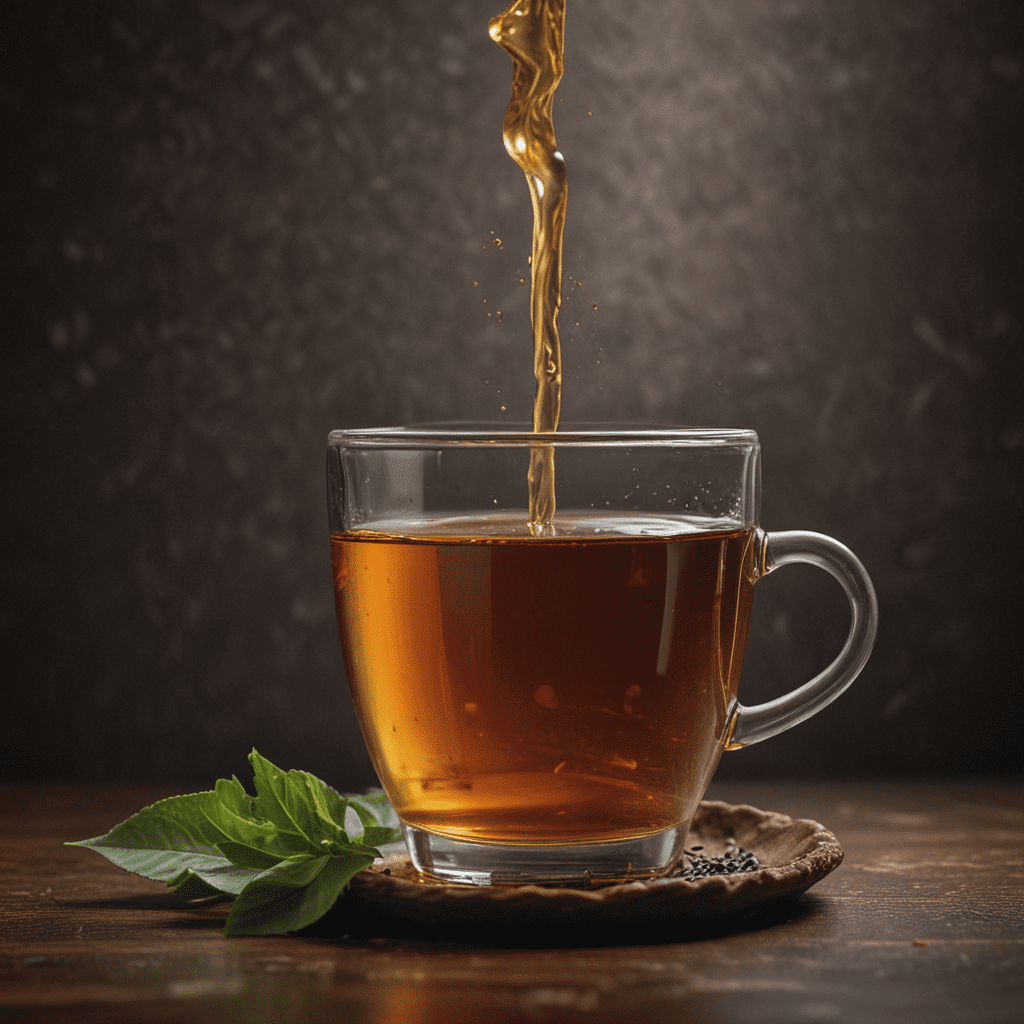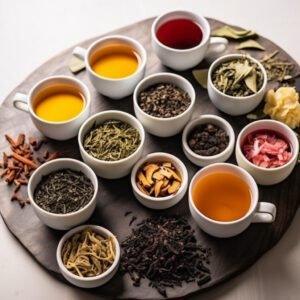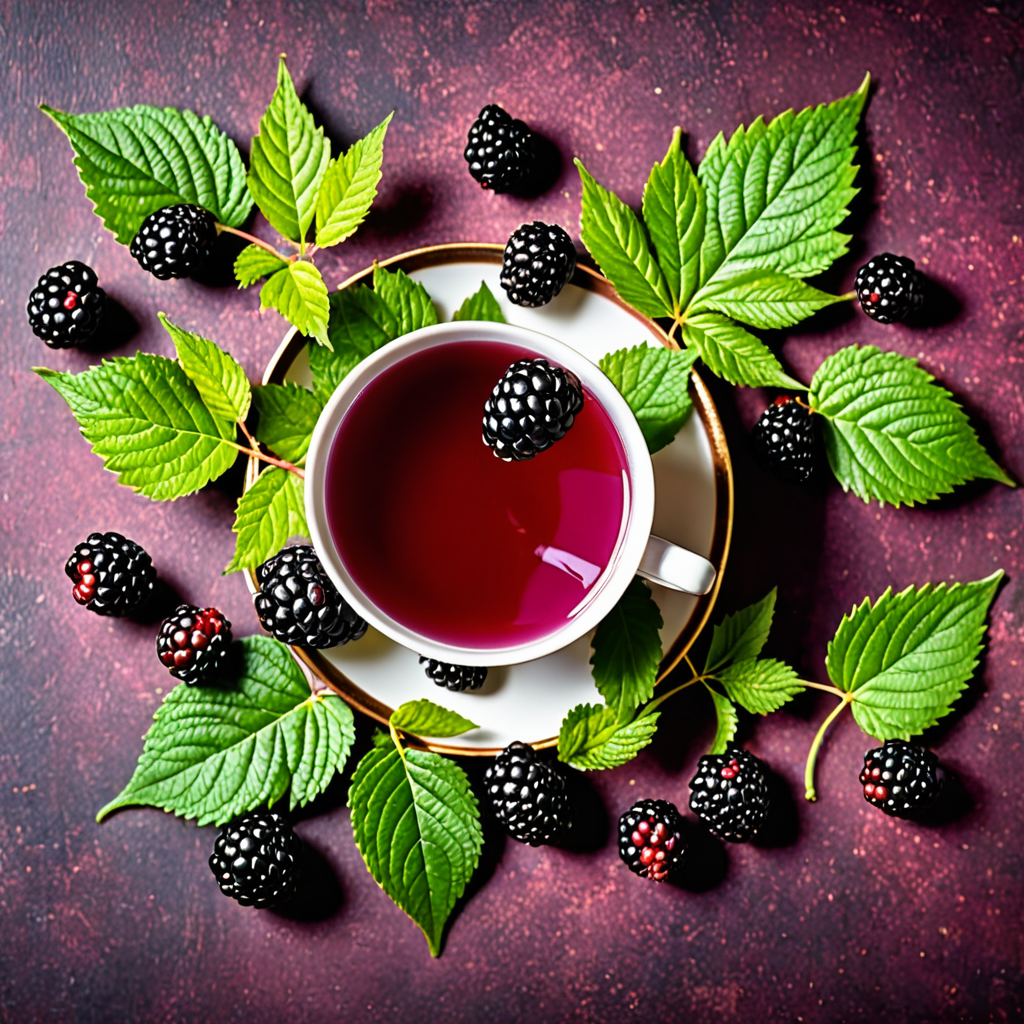The Harmony of Flavors: Exploring Ceylon Tea Profiles
I. Introduction
Welcome to the enchanting realm of Ceylon tea, where flavors dance and harmonize to create an aromatic symphony. Grown amidst the verdant hills and misty valleys of Sri Lanka, Ceylon tea is renowned for its exceptional quality, boasting a diverse range of flavor profiles that cater to every palate. Embark on a tantalizing journey as we explore the distinct characteristics of each region, unveiling the secrets of their unique flavor profiles.
II. Classifications of Ceylon Tea
The diverse topography of Sri Lanka contributes to a wide variety of tea-growing conditions, giving rise to distinct tea classifications. Each region imparts its own unique flavor nuances, making Ceylon tea a veritable treasure chest of flavors. Broadly classified based on elevation, these teas can be categorized as high-grown, mid-grown, and low-grown.
III. The Kandy Region: Home to Fruity Delights
Nestled amidst the central highlands, the Kandy region is renowned for its high-grown teas. The cool, misty climate and fertile soil provide ideal growing conditions for tea plants to flourish. Kandy teas are characterized by a lively bouquet of fruity notes, ranging from sweet berries to citrus zest. Their delicate flavors and refreshing character make them a favorite among tea enthusiasts.
IV. The Nuwara Eliya Region: Mountain Mist and Floral Notes
Ascend further into the mountains and you will encounter the Nuwara Eliya region, the highest tea-growing area in Sri Lanka. Here, the cold, misty air nurtures tea plants that produce teas of exceptional finesse. Nuwara Eliya teas are renowned for their floral undertones, reminiscent of blooming jasmine or delicate lavender. These teas are a true delight for those seeking a fragrant and ethereal tea experience.
V. The Uva Region: Robust and Spicy Wonders
Venture to the southeastern slopes of the island and discover the vibrant Uva region. Known for its robust and spicy teas, Uva is home to mid-grown tea plantations that thrive in the warm, humid climate. Uva teas showcase a bold character, with notes of cinnamon, nutmeg, and clove mingling harmoniously. Their full-bodied flavor and invigorating aroma make them a perfect choice for those who enjoy a hearty cup of tea.
VI. The Dimbula Region: Delicate and Citrusy Charms
Journey towards the western highlands and encounter the Dimbula region, known for its mid-grown teas. The temperate climate and well-draining soil foster tea plants that produce teas with a subtle yet distinctive flavor profile. Dimbula teas are characterized by their delicate and refreshing notes, often带有柑橘香气. Their balanced flavor and clean finish make them a popular choice for those seeking a light and invigorating tea experience.
VII. The Sabaragamuwa Region: A Symphony of Sweetness and Strength
Nestled in the southwestern part of the island, the Sabaragamuwa region is home to mid-grown teas that offer a unique blend of sweetness and strength. The warm, humid climate and rich soil provide ideal conditions for tea plants to thrive. Sabaragamuwa teas exhibit a full-bodied flavor with hints of caramel and malt, balanced by a subtle sweetness. They are a harmonious choice for those who appreciate a rich and satisfying cup of tea.
VIII. The Ruhuna Region: Coastal Breezes and Earthy Undertones
Descend to the southern coastal plains and discover the Ruhuna region. Low-grown teas from this area are influenced by the proximity to the Indian Ocean, resulting in a distinctive flavor profile. Ruhuna teas possess earthy undertones, reminiscent of damp soil or freshly cut grass. They offer a full-bodied, rustic character with a hint of salinity, making them a unique choice for tea connoisseurs seeking an earthy and evocative experience.
IX. The Tea Pairing Journey: Enhancing Flavor Profiles
Beyond understanding the distinct flavors of Ceylon teas, exploring the art of tea pairing can further elevate your tea experience. Consider pairing your tea with complementary foods or flavors to enhance its nuances and create a harmonious symphony. For instance, fruity teas pair well with sweet treats like scones or pastries, while robust teas complement savory dishes like grilled meats. Experimenting with different pairings allows you to discover new dimensions of flavor and create personalized tea rituals.
X. Preserving the Harmony: Storage and Brewing Techniques
To maintain the integrity of your Ceylon tea's flavor profile, proper storage and brewing techniques are crucial. Store your tea in an airtight container away from light, moisture, and strong odors to preserve its freshness. When brewing, follow recommended water temperatures and steeping times for each tea type to extract its optimal flavors. By adhering to these guidelines, you can ensure that every cup of Ceylon tea you savor is a testament to its harmonious and exquisite qualities.
FAQs
What is the difference between high-grown, mid-grown, and low-grown Ceylon teas?
- High-grown teas are cultivated at elevations above 3,500 feet and are known for their delicate flavors and floral notes.
- Mid-grown teas are grown at elevations between 2,000 and 3,500 feet and offer a balance of flavor and body.
- Low-grown teas are cultivated below 2,000 feet and have a strong, full-bodied flavor.
What are some popular Ceylon tea blends?
- Earl Grey: A blend of black tea with the addition of bergamot oil, resulting in a citrusy and fragrant tea.
- English Breakfast: A robust blend of black teas, often combining Assam, Ceylon, and Kenyan teas, creating a strong and invigorating brew.
- Ceylon Orange Pekoe: A high-quality black tea with a bright orange hue and a brisk flavor, often enjoyed with milk and sugar.
How should I store my Ceylon tea to maintain its flavor?
- Store Ceylon tea in an airtight container away from light, moisture, and strong odors.
- Keep your tea in a cool, dry place to preserve its freshness and prevent deterioration.


